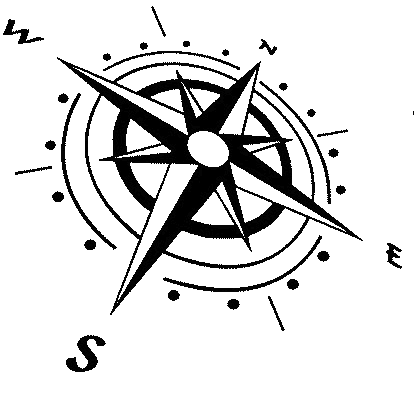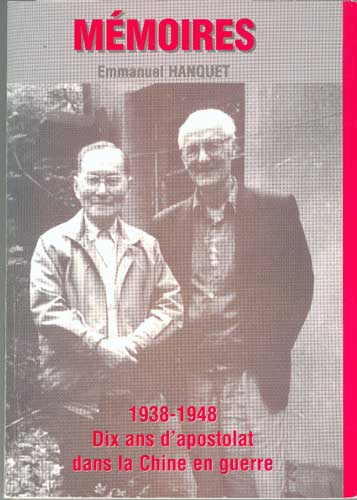"MEMOIRES"
(translated into English mostly by the ex-prisoners of Wehsien)
© Emmanuel Hanquet.
Any reproduction or excerpt of this book, by any process whatsoever, including photocopying or micro-film, is strictly prohibited without prior permission of the author.
Printed in Belgium.
front cover:
© Google translate:
Father Emmanuel Hanquet is accompanied by Father Vincent TSU, S.J ...
The latter was the nephew of Bishop TSU, one of the first six Chinese bishops consecrated by Pius XI in 1926.
Vincent TSU endured 2 convictions from the Chinese Communists: first 20 years of imprisonment, reduced to 15 years thanks to an intervention of his former comrades to Minister Tindemans. (Belgian Government)
Vincent TSU had been a student at the college of Godinne in 1933 and 1934.
He then entered the Novitiate of the Jesuit Fathers in Laval, France (northern province)
He is sentenced to a second house arrest at his grandparents' home in Shanghai. When Father Hanquet met him in 1991, he lived in a room of 3 meters by 6 meters, the former home of the gardener. The photo was taken in an adjacent courtyard. He was still in custody on that date.
He died in 1994.
aknowledgements:
It is with an intense gratitude that I address here my thanks to all those who helped me in the transcription of these memories, encouraging me to write, finding for me photos and documents, correcting my texts.
I especially thank:
Christiane Moens de Fernig, hospitable friend with whom I wrote my first texts, Rose-Michèle Rouffart, secretary of Lycée Molière, who for two years, reread and improved many of these chapters for publication in Infor-Molière,
Françoise Petit and my sister, Monique Bonaert, who were kind enough to correct the proofs of this book, Raphaël Bonaert, my nephew, whose knowledge in publishing allowed me to meet the deadline of my 8o years.
I wish all my relatives, family members and long-time friends, to find in these pages some food for thought and growth.
Emmanuel Hanquet
This book is sold for the benefit of Hungtung Hospital, Shansi Province, China, at a price of BEF 69, to be paid to:
000-0143717-60,
by E. Hanquet,
rue des Buissons 1/201
B-1348 Louvain-la-Neuve.
Belgium.
preliminary,
A BRIEF OVERVIEW OF THE HISTORY OF CHINA,
FROM 1911 TO 1945
© Google Translate: ...
Chinese Dynasties ... Empress Tse-Xi, The Last Emperor - whose film was screened recently - have revived curiosity and interest in this huge country of one billion one hundred million people.
How to see clearly?
Let us sum up the situation as it is when I arrive in Beijing in January 1939.
The Chinese empire collapsed in 1911. The last emperor is still a child. He became a puppet emperor in the northeastern provinces of China, called by the Japanese Manchukuo (Manchuria) when they seize in 1931.
In a republic proclaimed in 1911 and looking for itself, there appears a thinker, many of whom will claim. He will be called the Father of the Republic: it is Sun Yat-Sen. His brother-in-law, Chiang Kai-shek, will strive for 15 years to train troops and cadres to unify the country in the grip of infighting in many provinces. Local leaders, nicknamed the warlords, will gradually join the national government, but not without difficulty.
In central China's Kiangsi Province, Chinese communists in 1926 established their authority in 15 rural Chingkangchan bases. They formalize their occupation in November 1931.
The national government will force them to abandon these bases and will begin for them what was called the long march, in October 1934.
Leaving nearly a hundred thousand, taking with them women and children, they will be only thirty thousand in January 1935 in Tsounyi, where Mao will try to regroup his forces before entering Sse-Chuen. But they will still have to cross dozens of mountain ranges, lose a lot of human life in impassable marshes and, when they reach the Shensi and their future base of Yenan, they will be only about ten thousand, all emaciated and ragged . Among them, the main leaders of the communist regime: Mao Tse-Tung, Chu-Teh, Chou En-Lai and Lin-Piao.
In the south of Shensi, in Sian, Chiang Kai-shek is invited by one of his generals, Chang Hsueh-Liang, to seal the sacred union of resistance to the Japanese. In fact, he is the victim of a conspiracy by the Reds to obtain the right to own their own army. It is December 1936. Chang is taken prisoner for two long weeks. He must give way. The Reds will take the opportunity to strengthen their authority over the North West Provinces of China, thanks to their newly formed 8th Army.
On July 7, 1937, a minor fight between Chinese and Japanese soldiers south of Beijing will degenerate into a deadly war that will last eight years.
At the end of the conflict, the Japanese still had four and a half million soldiers and two thousand seven hundred planes, while the Chinese government had only one million seven hundred thousand men and six hundred planes.
However, the Japanese, who had occupied all of China's plains and had a whole network of communications in certain inland areas, were forced to capitulate on August 15, 1945, after the atomic bombings of Hiroshima and Nagazaki.
For Chiang Kai-shek and his troops, it was now a speed struggle to occupy Beijing and northern China before the communist troops.
I will witness this extraordinary and paradoxical situation: see the Japanese soldiers - after their capitulation and under the orders of the Allies - continue to monitor the railways in the north of China until May 1946: it was necessary to prevent the Reds from seizing it ...









